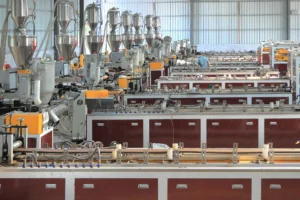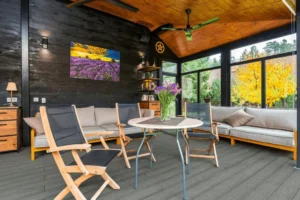Preparation of Ternary Wood-Plastic Composite Material
Wood-plastic composite materials have become a significant research and development area in the wood science and technology field. These composites are made by processing wood fibers, thermoplastic resins, and other additives, offering several advantages. They are easy to produce, require low maintenance, and have a long service life. Furthermore, wood-plastic composites outperform pure wood and plastic materials, making them widely used in construction, furniture, and logistics packaging industries.
Challenges in Lignin and Polymer Blending
Lignin contains a large number of hydroxyl, aliphatic, and aromatic groups that create strong intramolecular interactions via hydrogen bonds. These interactions lead to widespread crosslinking, which limits the application of lignin in many areas. While polymer blending is cost-effective and widely used to create new materials with ideal properties, lignin’s strong intermolecular forces can be reduced by blending it with other polymers.
However, lignin’s compatibility with most polymers, such as polyethylene (PE) and polypropylene (PP), is low due to significant polarity differences. This poor interfacial adhesion between lignin and non-polar polyolefins affects the performance of the composite material. To resolve this issue, chemical modifications or the addition of compatibilizers are necessary to reduce interfacial tension.

Advances in Lignin/Resin Blending Technology
In recent years, blending and modification techniques for lignin/resin composites have made significant progress. This is especially true for polyolefins such as polyethylene (PE), polypropylene (PP), and polyvinyl chloride (PVC). One of the most promising approaches is the development of Acrylonitrile-Butadiene-Styrene (ABS)/PVC-based composites. These composites combine the excellent properties of ABS, such as good processing and heat resistance, with PVC’s advantages of flame resistance and chemical durability. Furthermore, the lower cost of PVC helps to reduce the overall cost of the composite.
However, there has been limited research on ABS/PVC composites, and there is a need for effective technologies to incorporate lignin into ABS/PVC composites. Such innovations could significantly enhance the overall performance of wood-plastic composites.
Challenges with Direct Use of Lignin in Wood-Plastic Composites
While lignin is a promising material, using it directly in wood-plastic composites often reduces the material’s toughness. Previous studies found that nitrogen-grafted lignin improves some properties when used in PVC-based composites, but it still results in lower tensile strength and elongation at break compared to the desired performance.
Given that ABS resin features an aromatic structure in the polystyrene segment and a highly polar -CN group in the acrylonitrile segment, it should have good interfacial compatibility with lignin. Therefore, this study explores the use of ABS/PVC as the base material for creating ternary composite wood-plastic materials.
Objective and Approach
The primary goal of this study is to develop a modified lignin that can effectively interact with ABS/PVC, enabling the creation of a ternary composite material. This composite will have performance characteristics that match or exceed those of ABS/PVC composites on their own.
Key Advantages of the Modified Materials
- – Enhanced Mechanical Properties: The nitrogen-grafted lignin significantly improves the mechanical properties of ABS/PVC composites, particularly the bending performance, which exceeds that of the original ABS/PVC composite.
- – Improved Biomass Utilization: The modified lignin increases biomass utilization and reduces production costs. It also enhances the sustainability of wood-plastic composites.
- – Superior UV Resistance: The nitrogen-grafted lignin improves the UV aging resistance of ABS/PVC composites, making them more durable and effective for outdoor applications.
Trending Reading
What Are the Differences Between the WPC Board and PVC Board?
[2024 Update] How Long Does WPC Decking Last?












